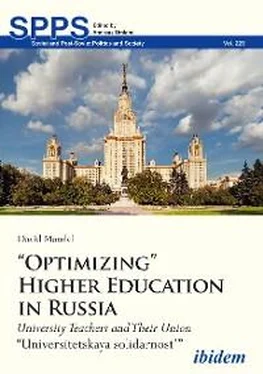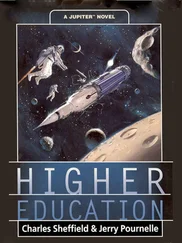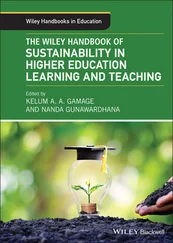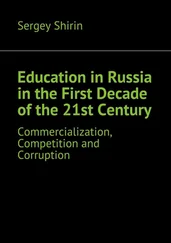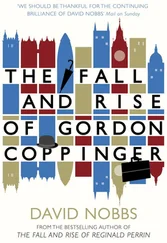During the election campaign Putin made the promise, repeated after his election, to raise the salaries of university teachers to double the average wage of their respective regions. Then on December 30, the government published its “road map” for “Changes in the Social Sphere Aimed at Increasing the Efficiency of Education and Science.” 33That document announced, among other things, that 44% of full-time teaching positions in higher education would be eliminated over the next five years. In absolute terms that meant the loss of 140,000 of the existing 318,000 positions. The document justified this by a projected decline of the university-age population, as well as by its goal of raising the student/teacher ratio from the current 9.4 to the OECD average of 12.
The projected job cuts were widely—and, as it turned out, correctly—interpreted by teachers to mean that the promised salary increase, even if realized, would not be achieved through significant new funding but by intensifying the workloads of those who remained. Moreover, the independent university teachers’ union Univesitetskaya solidarnost’ (henceforth Unisol) pointed out that the decline in university-age population, a consequence of the dramatic fall in births during the depression of the 1990s, would end as early as 2018. 34As for the teacher/student ratio, it was observed that Russia’s university teachers, unlike those of most OECD countries, do not enjoy the support of teaching assistants. On the other hand, doctoral students ( aspiranty ) who teach are counted as teachers. As a consequence, the average OECD student/teacher ratio is a meaningless benchmark for Russia. 35
Putin’s third presidential mandate and the appointment of Dm. Livanov as Minister of Education and Science brought an intensification of the policy tendencies of the preceding administration. Writing in 2014, Professo r A.V. Mogilev of Voronezh State Pedagogical University compared Livanov’s policies with those of his predecessor Fursenko: “With the change of Ministers of Education, the pressure on universities not only intensified, but took on a completely different character. If under Fursenko we witnessed the incomprehensible, almost senseless, bureaucratic overturning and demolition of established university practices and traditions in teaching and administration—the introduction of the bachelor’s programme, the new educational standards, the purported competency-oriented approach, the never-ending rewriting of course plans and work programmes; then now, under Dm. Livanov, we suddenly see come to the fore a certain efficiency… Many lances have been broken over that university efficiency… But the parameters set arbitrarily by the ministry for last and this year’s monitoring are such that Stanislavskii would say: “I don’t believe.” 36
In November 2012, early in his ministerial mandate, Livanov, a physicist, who had been vice-rector and then for several years rector of the National Research and Technological University (formerly Moscow Institute of Steel and Alloys), provoked the ire of teachers by suggesting to an interviewer on national television that low salaries among university teachers were to be explained either by the low quality of those teachers, which forced them to agree to so little; or by their taking on work in several universities and running among them. A third possibility, he suggested, was that the teachers were taxing their students. “In all three cases,” he concluded, “such a university cannot be considered to be functioning efficiently.” 37
With the declared goal of ensuring quality and “optimizing,” but with a clear emphasis on economizing public funds, 38the government established Rosobrnadzor in 2012, the Federal Service of Inspection and Control of Education and Science, a department of the Ministry of Education and Science. It was assigned the task of monitoring the performance of institutions of higher learning at regular intervals on the basis of some 150 indicators for each institution, with six to eight of these, depending on the year, considered critical. In 2012-13, 52 institutions were closed on the basis of Rosobrnadzor’s inspections and 373 satellites were either reorganized through mergers or shut down. The process continued in the following years, though at a slower pace. 39
Few could deny the need to ensure the quality of higher education and to put some order into the chaotic situation that had arisen during the “wild nineties,” which, among other things, had witnessed the profound restructuring (some might say destruction) of the economy inherited from the Soviet Union and a major reorientation of the values and career aspirations of the university-age population. But Rosobrnadzor came in for harsh criticism from teachers for its formalistic, bureaucratic approach to evaluations, the inordinate amount of frenzied paperwork its inspections demanded form university staffs, the dubious quality of many of its “expert” inspectors, and, finally, the arbitrary, apparently politically inspired, nature of certain of its decisions. 40
The counterpart to monitoring, whose purported goal is to weed out underperforming institutions, were new policies aimed at “promoting excellence.” One of the most notable of these was the “5-100-20” programme, launched in 2013 with the goal of five universities entering major global rankings of the top 100 universities by the year 2020. Initially, fifteen universities were chosen for special federal funding under this programme. Several more added in following years, while others were disqualified.
That university rankings have become a big business and have been the object of criticism for the dubious character what they in fact measure 41did not discourage the government. Many teachers, however, expressed their skepticism about the programme and about how the additional funding was being spent. M. Balashov, teacher of higher mathematics at MFTI, compared it to the New-Guinean cargo cult: “Many of my colleagues, myself included, can’t shake off the feeling that everything is being turned upside down in this project of ‘entering the top 100.’ After all, universities aren’t good because they’re in the top 100. On the contrary, they’re in the top 100 because they’re good.”
At a gathering of the supervisory boards of universities participating in the 5-100-20 programme in 2014, Minister Livanov decried the “ineffective administration that had been formed over decades” in Russia’s universities and that was holding back their development. For that reason, he explained, he had created supervisory boards in the participating universities, composed of business people and government functionaries, “people with experience in solving large-scale tasks.” They would become “in essence, the organs of strategic management of the universities, the analogue of boards of directors of big companies.” These boards would appoint the rectors. An assistant to Livanov let it be known that that innovation would soon be introduced in “all decent Russian universities.” 42
Among the other important innovations of this period were the introduction one-year employment contracts for university teachers, as well as “effective contracts,” according to which a highly arbitrary bonus part of the salary, often equal or even greater than the guaranteed part, was made heavily dependent on publishing activity, with a special premium on publications in journals indexed in international citation databases.
And as one might surmise from Livanov’s words, no store was placed in faculty participation in university governance. And for all practical purposes, the elements of teacher participation that had appeared after the fall of the Soviet Union were eliminated in this period. And as before, these new reforms were adopted without consultation of the university community. Sociologist Zh. Toshchenko of Moscow’s RGGU (Russian State University for the Humanities) observed:
Читать дальше
